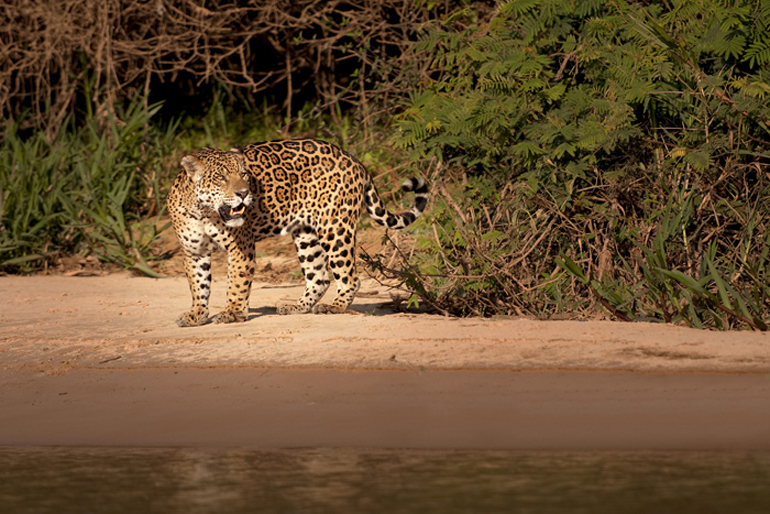
I am at Caiman Ranch, the first to offer ecotourism in the Pantanal. My horse postholes through sucking mud and wades across shallow ponds. Before long both horse and rider are covered with a slurry of sweat and mud. Still it's two hours before we stop and dismount on a forested island with a really rank odor. This is what brings us here. A bloated, putrid carcass of a bull, the only signs of life the wriggling maggots. Yesterday this was money on the hoof. Today it's a jaguar kill and still money on the hoof. How so?
Jaguar kills are not news in these parts. Ranchers are typically alerted by buzzards circling overhead. A professional jaguar hunter, with hounds, is called to the rescue. The cat runs and runs, followed by the dogged hounds. Eventually the weary feline takes to the treetops, to eacape the dogs, whereupon it is shot and left on the ground to rot. Jaguar dust to dust. Sad? It depends on your viewpoint. Illegal? Definitely, but so what? This is a big place with few people and very little law enforcement.
But things are different now. Conservation groups, in an effort to save the endangered cats, will now pay ranchers for confirmed kills. Caiman Ranch gets a check and in return the jaguar can live. And there is a nice bonus to this arrangement.
Adventure travelers will pay big bucks for the chance to see a wild jaguar. And jaguars are much less skittish since they aren't dodging bullets any longer. So tourists go home happy which makes the ranchers happy. Ecotourism may indeed be the salvation, of a way of life in the Pantanal and of habitat, for the jaguar and all species that tag along.
My own quest to capture a jaguar on film was spaced over 15 years and 13 trips to South America. The above photo is the "trophy" of that persistence, captured in 2013 in the north Pantanal region of Brazil.